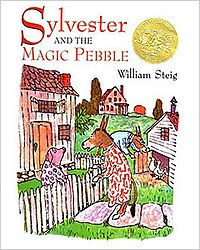Anonymous. (1971). Go ask Alice. New York, NY: Simon Pulse.
Age Range: Young adults in grades 9-12 would be able to connect with this story. Readers would, however, have to be on a mature level to grasp the overall text.
Summary: This book is written in a journal format. It is told in a first person point of view from a fifteen year old female who is part of a successful family. The main character who goes without a name throughout the text and is simply referred to as "Anonymous." Anonymous struggles with adolescence, family, friends, school, and growing up in a drug infused era. There are major changes in the character throughout the book that continues to keep readers on the edge of their seats. She basically starts out as a nice, friendly girl who only desires nice friends and to be accepted; however, it seems like in a matter of minutes she is a drug addicted, juvenile delinquent who cannot seem to overcome the growing obstacles that face her in her attempts to recovery.
Reflection: This book is widely known for its graphic storyline and believed truthfulness. It was a book I could not put down, because I was hoping until the end that everything would work out. She tries so hard to just become the person her family wants her to be and eventually who she wishes to be. The style of the book makes it an easy read for any reader. I would not, however, recommend it to any of my students because of its graphic nature. High school students could relate with the main character's struggle to be accepted by her peers and family. This book can even appeal to adults who would understand the difficulty with drugs during the 1960's and 1970's. Overall it clearly shows a main theme of how a desire to be accepted can lead down a dangerous road that can sometimes be difficult to leave. After reading this book, I just couldn't understand how I hadn't picked it up as a teen. I guess teachers were scared to recommend it to me, but I think it really shows how struggles with peer pressure can take a turn. I would have loved to read it as a teenager, because it is just so unbelievable!
Big Question: After reading this book, do you believe that the main character was at fault for her actions? Did she have the ability to change her life or was she stuck in a downward spiral? Did she make a mistake in the end or was someone else at fault? How did the main character's setting impact her life? Is she simply a victim of circumstance?
Answers to these questions would be very interesting, because they all require some sort of opinion, but with something to back them up.



 Myers, W. D. (1999). Monster. New York, NY: Harper Collins.
Myers, W. D. (1999). Monster. New York, NY: Harper Collins. 

 Steig, W. (1969). Sylvester and the magic pebble. New York: Windmill Books.
Steig, W. (1969). Sylvester and the magic pebble. New York: Windmill Books. 

